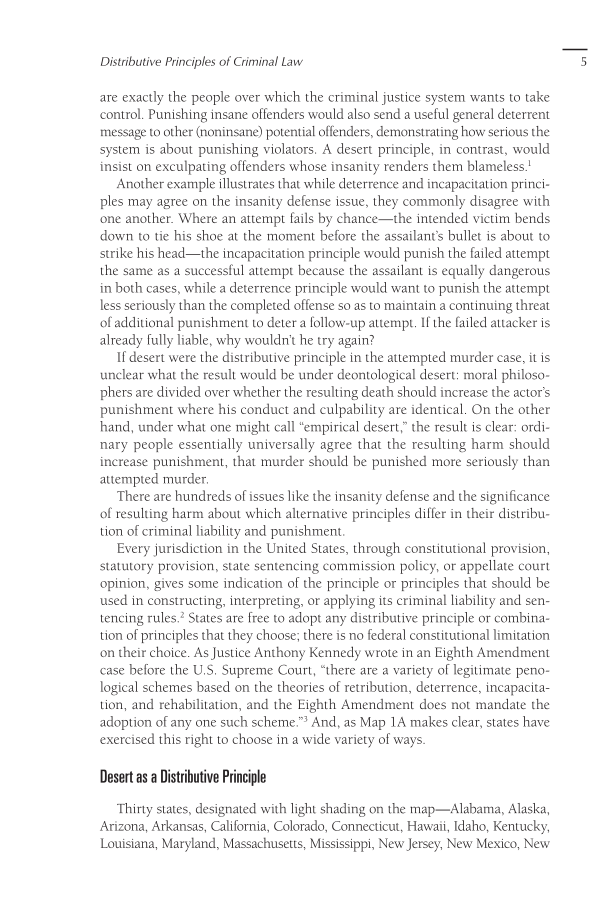Distributive Princi p les of Criminal Law 5 are exactly the people over which the criminal justice system wants to take control. Punishing insane offenders would also send a useful general deterrent message to other (noninsane) potential offenders, demonstrating how serious the system is about punishing violators. A desert principle, in contrast, would insist on exculpating offenders whose insanity renders them blameless.1 Another example illustrates that while deterrence and incapacitation princi ples may agree on the insanity defense issue, they commonly disagree with one another. Where an attempt fails by chance—the intended victim bends down to tie his shoe at the moment before the assailant’s bullet is about to strike his head— t he incapacitation princi p le would punish the failed attempt the same as a successful attempt b ecause the assailant is equally dangerous in both cases, while a deterrence principle would want to punish the attempt less seriously than the completed offense so as to maintain a continuing threat of additional punishment to deter a follow-up attempt. If the failed attacker is already fully liable, why w ouldn’t he try again? If desert were the distributive principle in the attempted murder case, it is unclear what the result would be u nder deontological desert: moral philoso phers are divided over w hether the resulting death should increase the actor’s punishment where his conduct and culpability are identical. On the other hand, under what one might call “empirical desert,” the result is clear: ordi- nary people essentially universally agree that the resulting harm should increase punishment, that murder should be punished more seriously than attempted murder. There are hundreds of issues like the insanity defense and the significance of resulting harm about which alternative principles differ in their distribu- tion of criminal liability and punishment. Every jurisdiction in the United States, through constitutional provision, statutory provision, state sentencing commission policy, or appellate court opinion, gives some indication of the principle or principles that should be used in constructing, interpreting, or applying its criminal liability and sen- tencing rules.2 States are free to adopt any distributive principle or combina- tion of princi p les that they choose t here is no federal constitutional limitation on their choice. As Justice Anthony Kennedy wrote in an Eighth Amendment case before the U.S. Supreme Court, “there are a variety of legitimate peno- logical schemes based on the theories of retribution, deterrence, incapacita- tion, and rehabilitation, and the Eighth Amendment does not mandate the adoption of any one such scheme.”3 And, as Map 1A makes clear, states have exercised this right to choose in a wide variety of ways. Desert as a Distributive Principle Thirty states, designated with light shading on the map— A labama, Alaska, Arizona, Arkansas, California, Colorado, Connecticut, Hawaii, Idaho, Kentucky, Louisiana, Mary l and, Mas s a c hu s etts, Mississippi, New Jersey, New Mexico, New
Document Details My Account Print multiple pages
Print
You have printed 0 times in the last 24 hours.
Your print count will reset on at .
You may print 0 more time(s) before then.
You may print a maximum of 0 pages at a time.

































































































































































































































































































































































